PLAYER-SOURCED JUMP SHOTS
WHEN PLAYERS REJECT THE RECOMMENDED ELBOW-IN-STROKESNAP JUMP SHOT
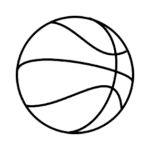
By Robert Tilitz
Since the arrival of the elbow-in-strokesnap model for the jump shot, many players have rejected it and developed their own personalized jump shots instead. That's despite the nearly unanimous support for the elbow-in-strokesnap techniques from coaches, instructional videos, TV analysts, etc. Chances are that many of the players who developed their own jump shots did so because they could not successfully implement the elbow-in-strokesnap techniques. The resulting player-sourced jump shots, of which there are many different types, constitute the vast majority of jump shots that players shoot today.
Most of the player-sourced jump shots have flaws that to different degrees counteract their redeeming features. Still, a few of the player-sourced jump shots are the best jump shots in basketball. Those are the ones that the whole-body jump shot theory has adopted as its prototypes. Among the other player-sourced jump shots, almost all are as good as the elbow-in-strokesnap jump shot. And some are indeed competitive jump shots. But while
competitive is good, the whole-body jump shots' array of athleticism, power, accuracy, touch and attack capability is better, much better.
The various player-sourced jump shots have probably contributed to the not uncommon belief that each player should develop his or her own type of jump shot. Although that view may be understandable, it is completely mistaken. The laissez-faire approach to jump shot development is nothing more than frustrated coaches paralleling frustrated players. The laissez-faire approach reflects frustrations teaching the elbow-in-strokesnap jump shot. The player-sourced jump shots reflect frustrations executing the elbow-in-strokesnap jump shot.
By contrast, my new whole-body jump shot theory is systematic, comprehensive and correct. It is also multifaceted. It includes several different whole-body jump shots and it allows for individualized variations of each one.
Ten different somewhat roughly defined player-sourced jump shots are the subjects of the following articles.
The Push-Off Shot - Streamlined and Mobile, But No Jump
The push-off shot arrived on the scene big-time in the wake of the rule change that changed basketball: the value-added 3-point shot. The value-added incentive to master long-range shooting led Trae Young straight to the push-off shot. Whether Young knew it or not, he was picking up where Magic Johnson left off. Johnson shot a stiff and stationary long-range shot, previously referred to here as the squat shot. Although Johnson shot the squat shot well, it was not geared for the volume shooting that Young had in mind. So Young athleticized the squat shot, effectively redesigning it in the process. For example, although both lack the jump of the jump shot, the push-off shot is streamlined and mobile, while the squat shot is neither. In fact, Young made his push-off shot into an attack jump shot based on its mobility. With all that said, both the squat shot and the push-off shot do get in the air, but because of the upward effort that goes into shooting, not a jump.
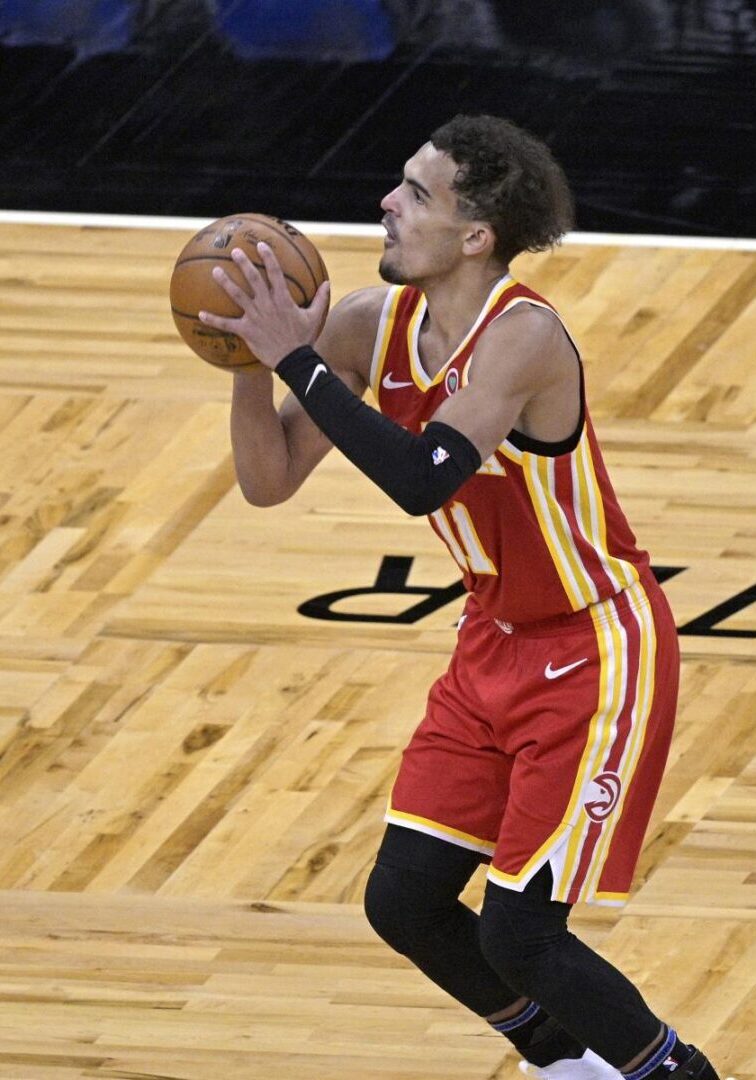
Trae Young
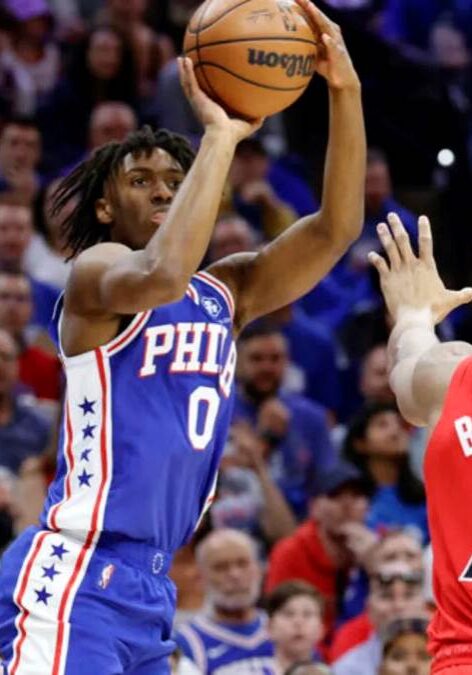
Tyrese Maxey
The Elbow-In-Push Jump Shot - Limited Attack Capability
The elbow-in-push jump shot is a nice piece of work when it has room to operate. But even Anthony Davis, big-man athlete extraordinaire, cannot attack the defense with it. For proof, there is Davis’s preference for the stepback jump shot over the attack jump shot. For more proof, there is Davis’s penchant for 3-point shots. Davis’s fans, of which he justifiably has many, instead might see his game as diverse, not attack-deficient. But based on the if-he-could-he-would principle, the argument made here is that if Davis had the right jump shot, then there would be a lot less stepback and a lot more attack.
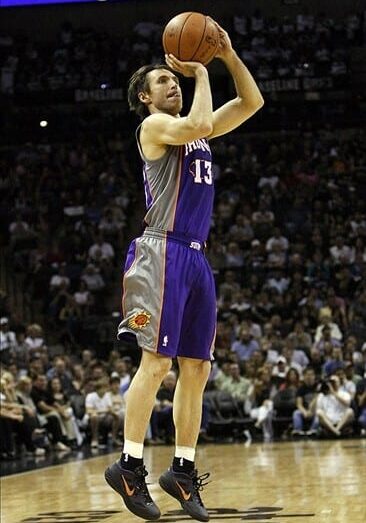
Steve Nash
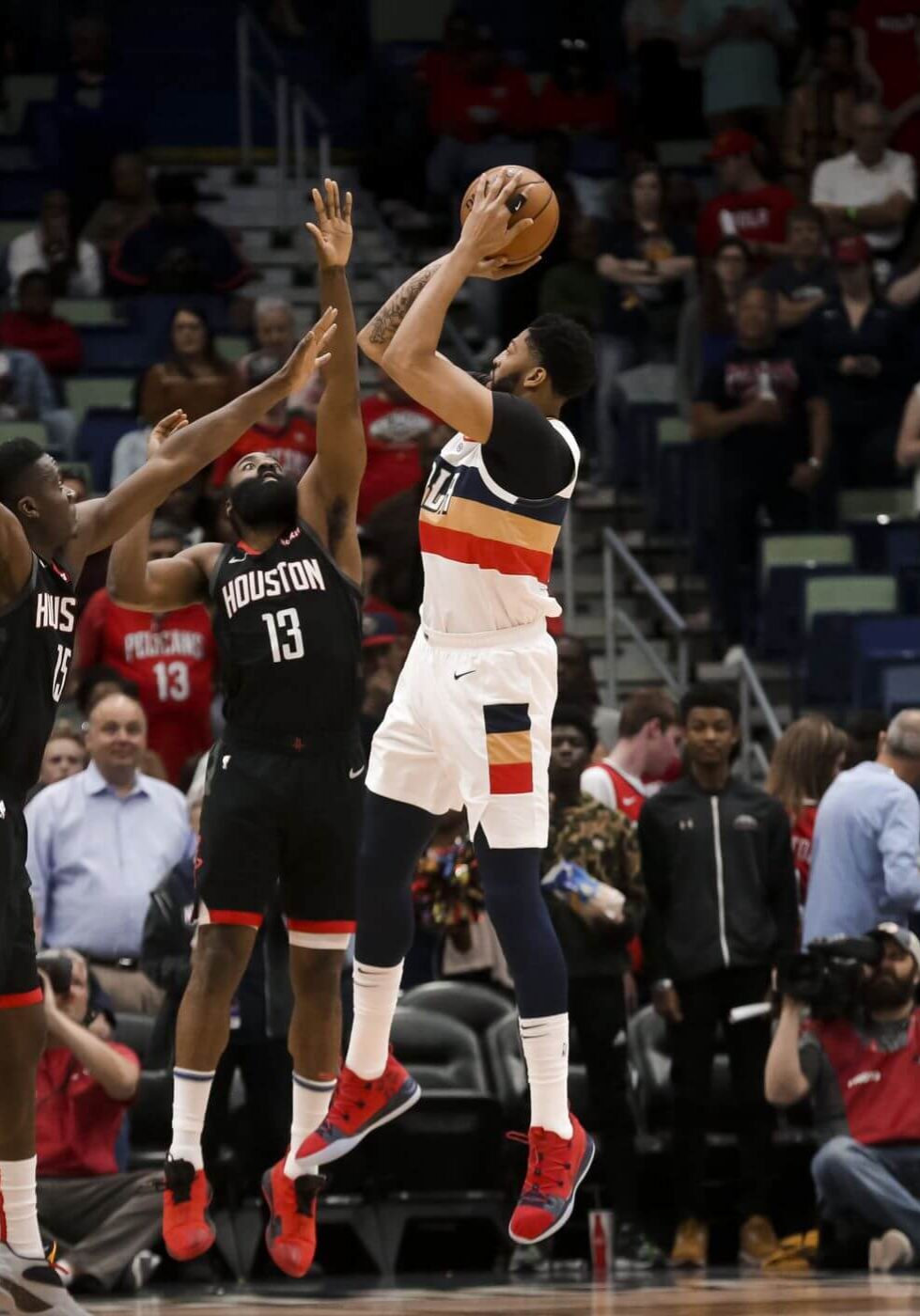
Anthony Davis
The Semi-Sideways Jump Shot - Good Going Weakside, Bad Going Strongside
Shape-shifting forces at work at the conclusion of weakside moves and run-ups set up the semi-sideways jump shot's shooting stance. The weakside semi-sideways jump shot is popular because it is easy to set up its shooting grip off the weakside dribble, it is easy to set up its shooting position for the start of the release and it is easy to shoot. But the opposite is true for strongside semi-sideways jump shots, so much so that most players seldom shoot them. That leaves the semi-sideways jumpshooter with one half of a jumpshooting game. And it's the wrong half. That's because the athleticism, power and protection that add up to the ability to attack the defense with the jump shot are much better on the strongside. Just the same, weakside semi-sideways jumpshooters, such as Michael Porter Jr., can make a lot of money by way of iso-scoring with weakside semi-sideways pull-ups, stepbacks, and fallaways.
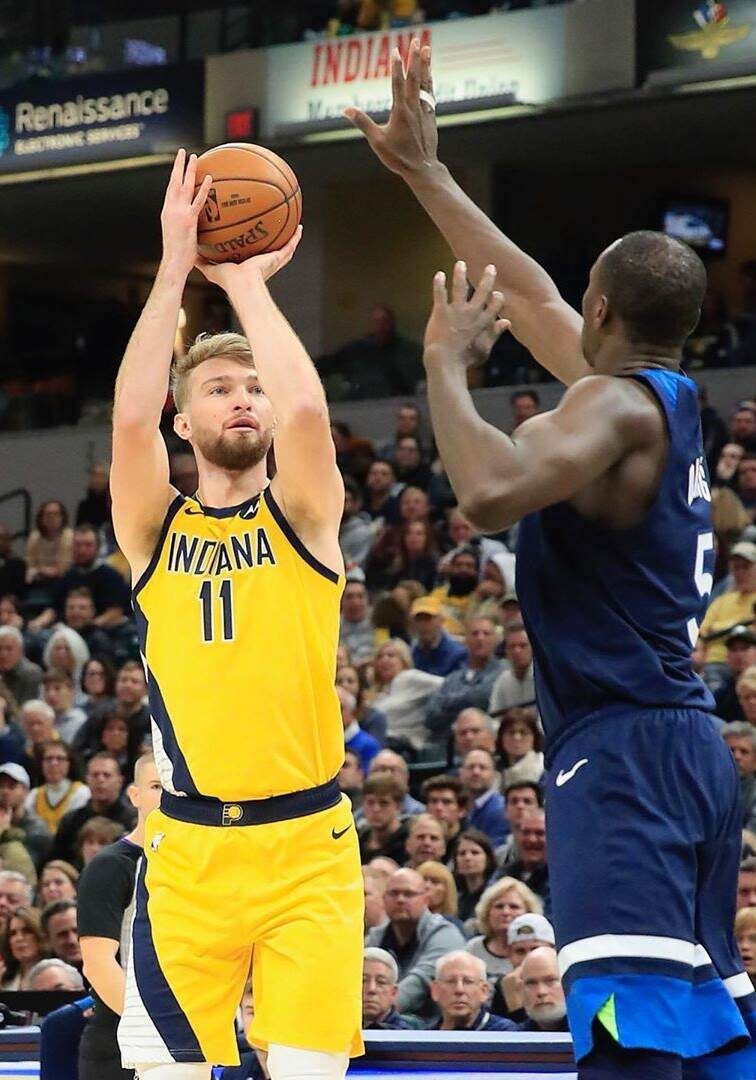
Domantas Sabonis
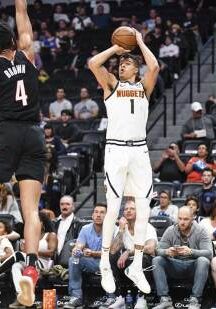

Michael Porter Jr.
The Cupgrip Jump Shot - Maximum Power, Minimum Control
Tim Duncan had size, strength and athleticism. But Duncan never came close to reaching his offensive potential because his jump shot’s release started with the stiff and semi-convex cupgrip, which makes the jump shot too powerful and difficult to control. For a cross-sports comparison, think of the cupgrip as working like jai alai’s semi-convex, ultra-powerful cesta. But comparisons aside, the plain fact is that the stiff and semi-convex cupgrip overcooks the jump shot. So despite being one of basketball’s all-time greatest big men, Duncan did not have a soft, arced-over-the-defender post-up jump shot in his toolbox, which was wholly attributable to the stiff and semi-convex cupgrip.
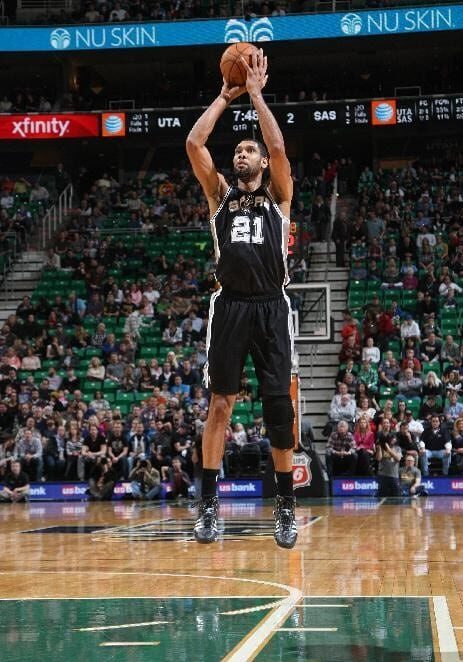
Tim Duncan
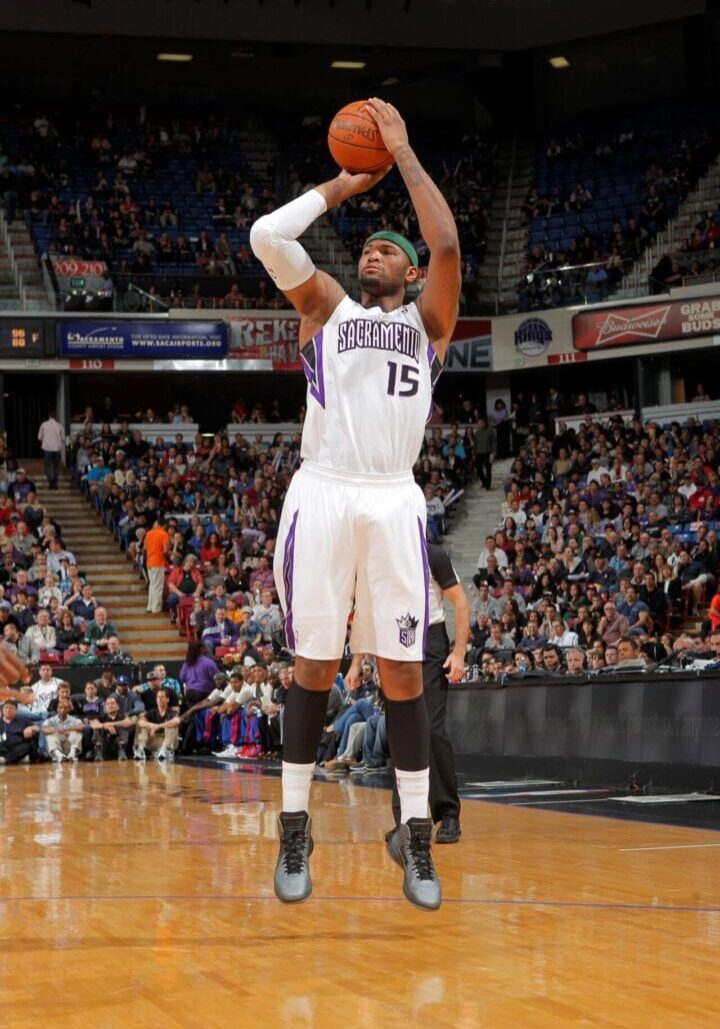
DeMarcus Cousins
The Elbow-Out-Strokesnap Jump Shot - Good Start, Mixed Results
Jimmy Butler's elbow-out-strokesnap jump shot gains physicality from the elbow-out shooting stance. Although not as physical as the whole-body elbow-out jump shot, the elbow-out-strokesnap jump shot is much more athletic and much more powerful than the pure elbow-in-strokesnap jump shot. The elbow-out-strokesnap jump shot's shooting stance adds physicality because it draws the start of the release back close to the body, streamlining the shooting stance and lengthening the release. Still, the strokesnap release excludes the shooting shoulder. And that's despite the fact that the close-to-the-body elbow-out shooting stance rolls the shooting shoulder back primed for action. That's a near miss, but a miss nonetheless. The cost is less than whole-body athleticism and less than whole-body power. Plus, the strokesnap release excludes brushing hand action, which is the single most effective control technique. Too bad for Butler, whose adherence to the strokesnap release, as opposed to the whole-body elbow-out jump shot's straightstroke-push release topped off by brushing hand action, arguably cost him and his team the 2023 NBA championship.
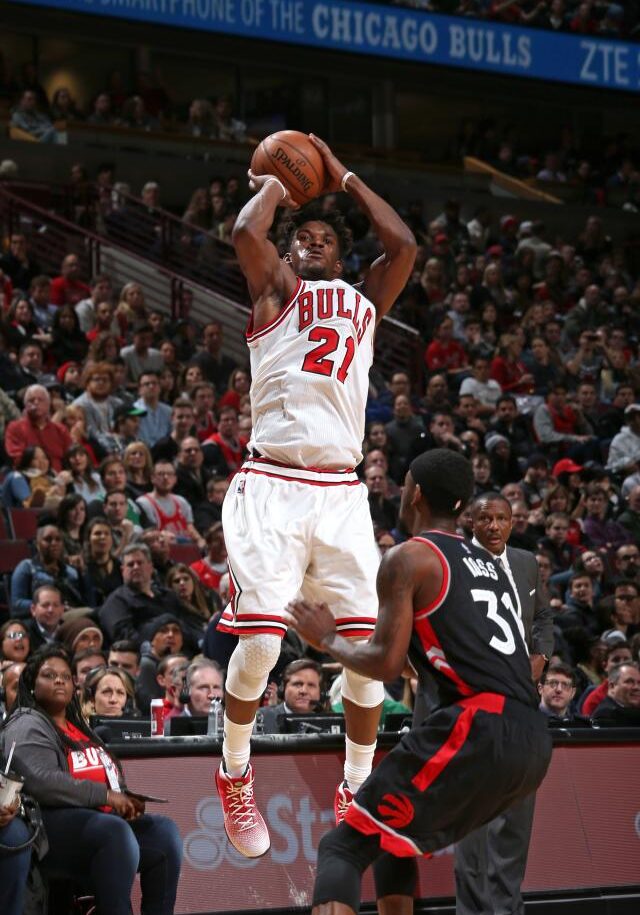
Jimmy Butler
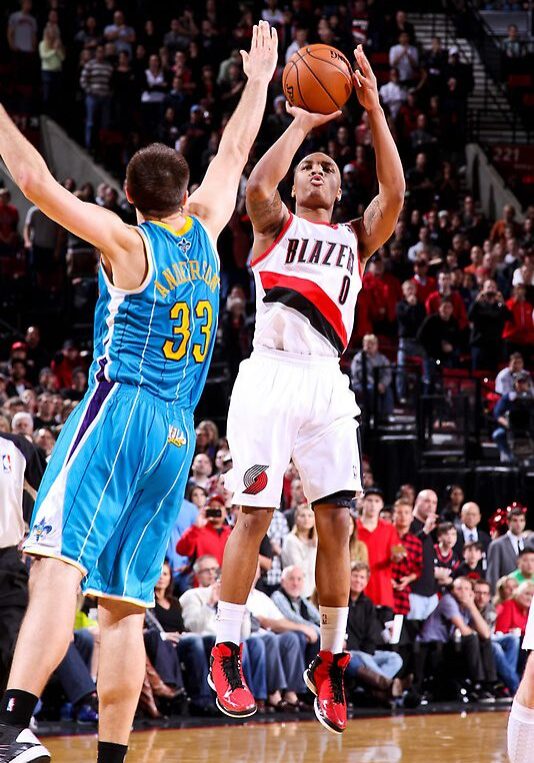
Damian Lillard
The Reachback-Strokesnap Jump Shot - Not Fit for a King
LeBron James sets up his reachback-strokesnap jump shot with a reachback that looks like the reachbacks of Kobe Bryant, Michael Jordan and Jerry West. But looks can be deceiving. James’s rolled back shooting shoulder does not activate as a source of whole-body athleticism and whole-body power. That’s very different from the shooting-shoulder-centric whole-body reachback jump shots of Bryant, Jordan and West. As a result, James’s reachback-strokesnap jump shot suffers major performance deficiencies. For James to upgrade his reachback-strokesnap jump shot, his rolled back shooting shoulder must activate for athleticism and power by way of engagement with the release mechanism.
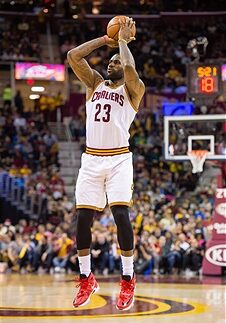
LeBron James
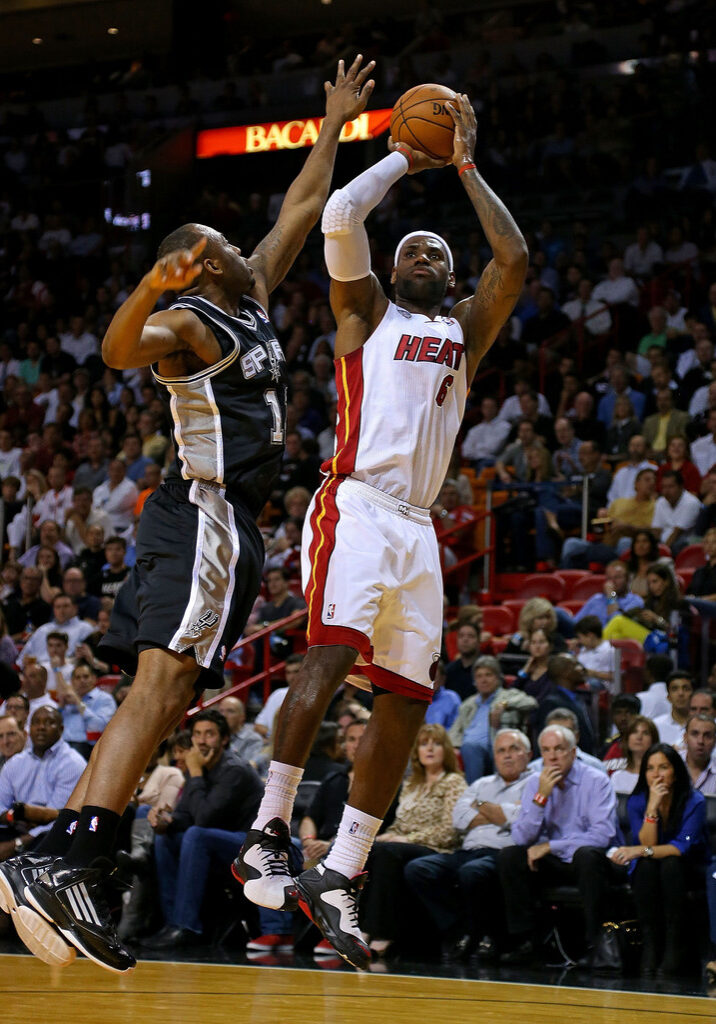
LeBron James
The Wrongside Jump Shot - Modest Benefits, Major Defects
Because it is next to impossible to shoot a strongside pull-up jump shot with the wrongside jump shot, Kevin Martin, one of the best wrongside jumpshooters, was left with a weakside-only jumpshooting game, which is basically one half of a complete jumpshooting game. To make matters worse, it’s the wrong half because it’s the half with a lot less attack capability. Otherwise, the lopsided wrongside jump shot doesn’t work too bad. In the hands of the right player, the weakside-only wrongside jump shot has good weakside-only athleticism, good power, good accuracy and good touch. But why settle for the wrongside jump shot and one half of a jumpshooting game when a total and complete correction is within reach? That’s because the whole-body elbow-out jump shot by way of its setup fundamentals can reliably and permanently correct the lopsided wrongside jump shot, which has until now been an intractable jump shot problem.
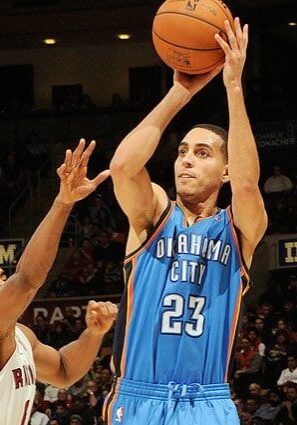
Kevin Martin
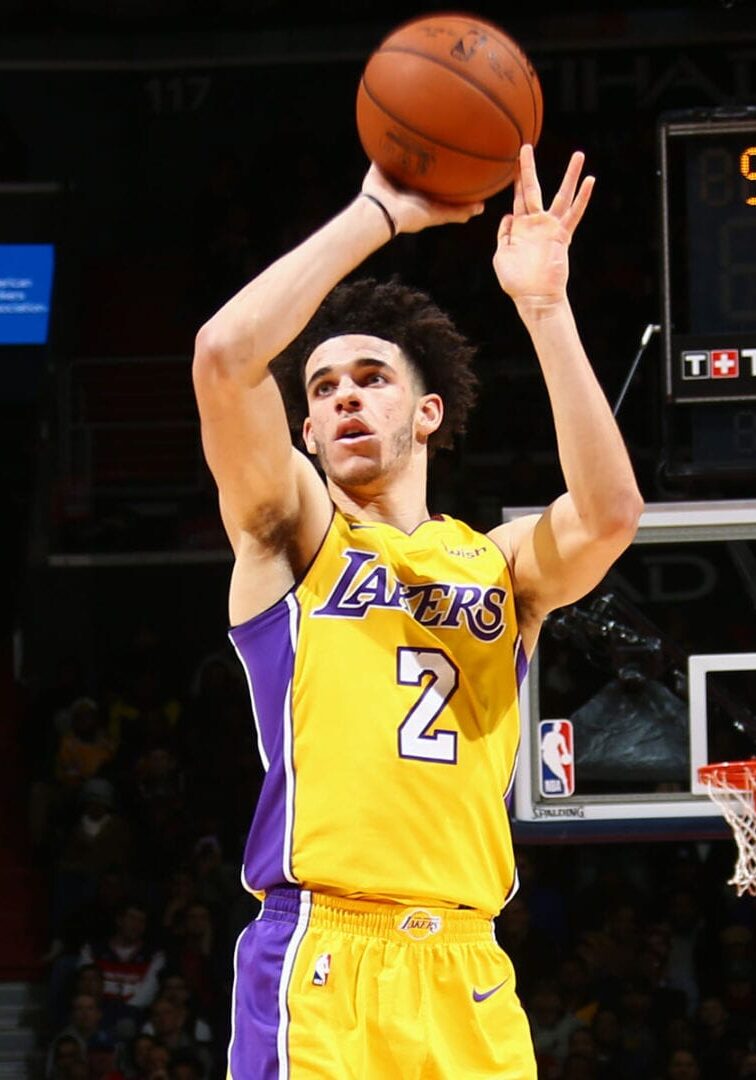
Lonzo Ball
The Roofgrip Jump Shot - Clamps Down on Athleticism
The roofgrip is bad for the jump of the jump shot and bad for the release of the jump shot. The roofgrip exerts downward pressure against the jump and the release. The compressed, awkward and unathletic roofgrip shooting stance simultaneously applies downward pressure and resists upward thrust, which is directly opposed to the dynamic of the jump shot. The roofgrip jump shot has squashed the offensive potential of Al Horford and all of the other unfortunate roofgrip jumpshooters. But Horford’s story stands out because he is a legitimate big man talent. It is a mystery why Horford’s athlete within somehow gave way to the compressed anti-athleticism that is the roofgrip jump shot. But it is also an observable fact. On the plus side, Horford’s roofgrip jump shot has given him a serviceable though klutzy 3-point shot. On the minus side, Horford’s roofgrip jump shot has left him without an athletic and attacking post-up jump shot.
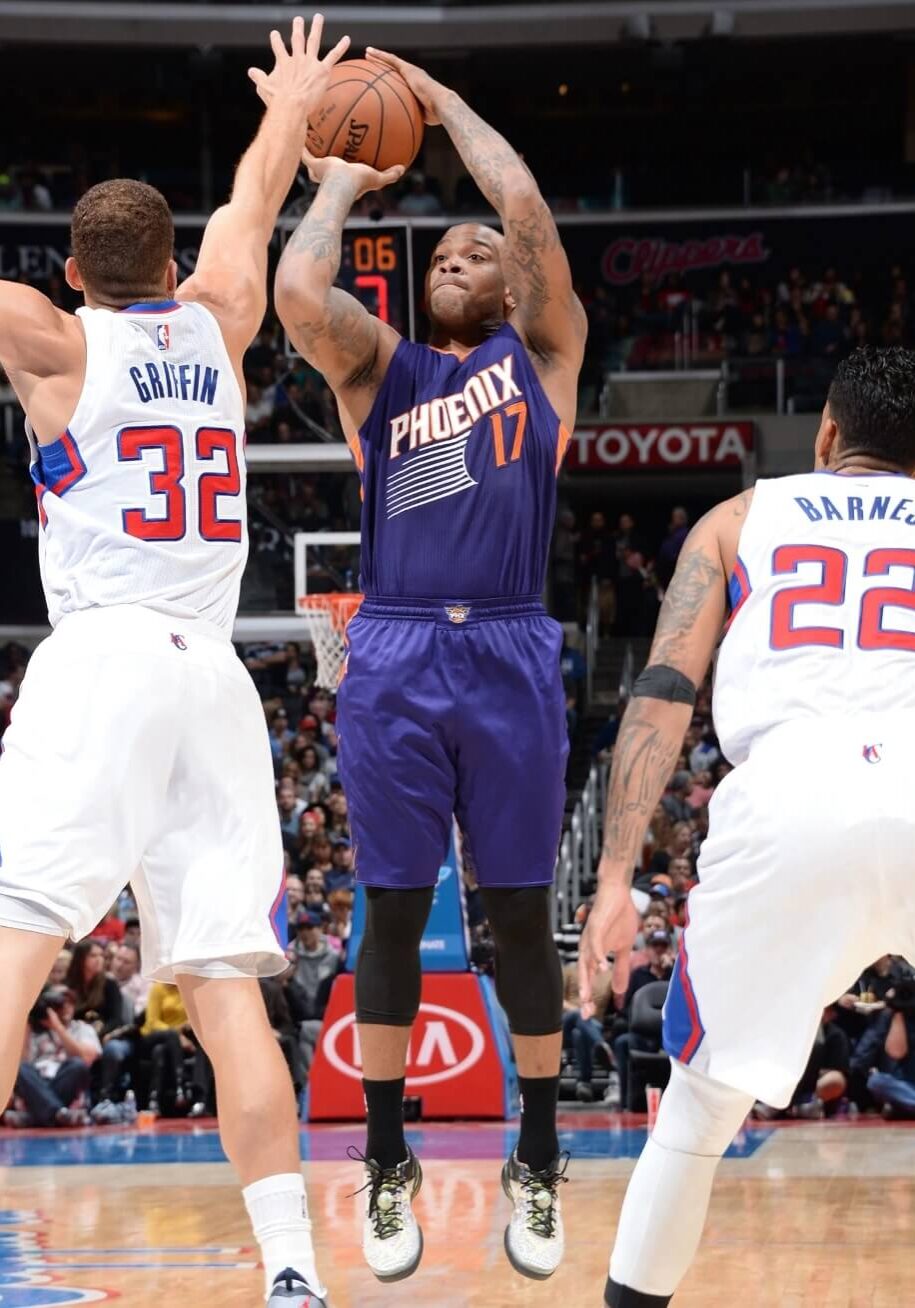
P.J. Tucker
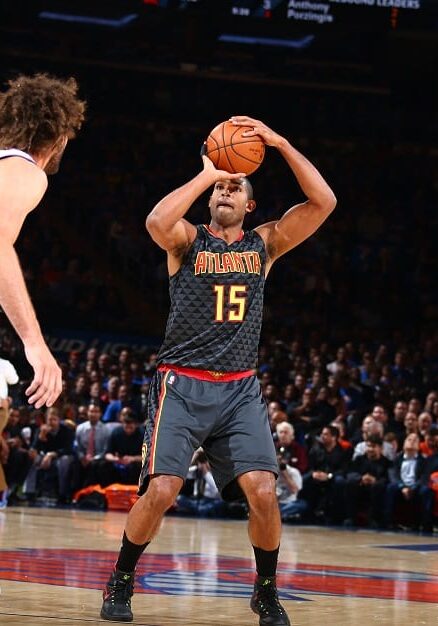
Al Horford
The Winggrip Jump Shot - Eliminates External Rotation of the Shooting Hand During Setup
Winggrip jumpshooters can put up good numbers. That’s partly because the winggrip’s angled-out shooting hand controls the winggrip jump shot. Controlling the jump shot with the shooting hand, which is a staple whole-body jump shot theory technique, is always a good idea. Along with that, the angled-out winggrip adds flexibility to the setup of the elbow-in, aligned-with-the-basket shooting position. By comparison, the setup of the widely supported elbow-in-strokesnap jump shot’s shooting position, which aligns the shooting hand with the shooting elbow and the basket, requires an awkward external rotation of the shooting hand that stiffens the resulting shooting position and release. But the angled-out winggrip also locates the shooting position for start of the release too far out front, which prevents the shooting shoulder from rolling back to engage with the release mechanism during setup, effectively removing the shooting shoulder from the winggrip jump shot’s release. Anthony Edwards therefore relies on the jump of his winggrip reachup jump shot and a reachback to help power the release. But because a max jump for a supplemental power boost is not always attainable and because a reachback disrupts the one-continuous-motion upward merge of the setup and the release that makes the reachup jump shot work, Edwards is an inconsistent jumpshooter, hot and cold at best.
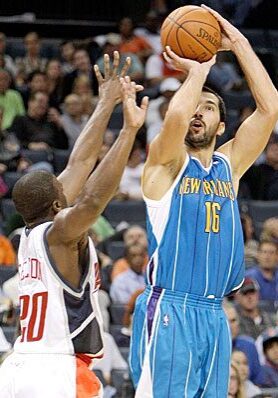
Peja Stojakovic
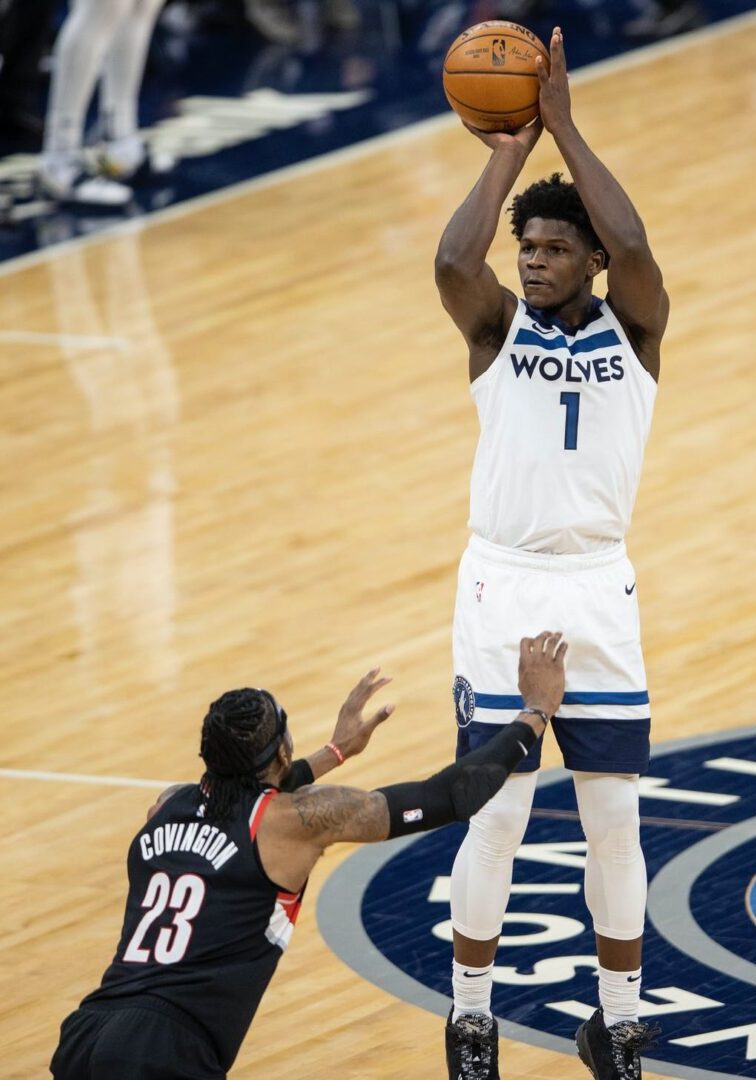
Anthony Edwards
The Cradlegrip Jump Shot - Comfortable, But Not What the Jump and the Release of the Jump Shot Require
The poor protection and the poor security of the basketball that are built into the non-oppositional, off-hand-back-behind-the-basketball design of the cradlegrip deny the cradlegrip jump shot the dynamic athleticism that attack jump shots require. The tenuous non-oppositional cradlegrip simply cannot hang onto the basketball when the physical demands of the attack jump shot arise, which mainly consist of pulling up off strongside moves or run-ups and squaring in the air. Consider the case of Jamal Murray. He’s got plenty of game. But he seldom shoots strongside mid-range pull-ups, which severely limits his ability to attack the defense with the jump shot and to unify his game. If Murray were to replace his elbow-out cradlegrip with a semi-oppositional shooting grip, which would transform his cradlegrip jump shot into a whole-body elbow-out jump shot, his jumpshooting game would gain athleticism and strongside attack capability.
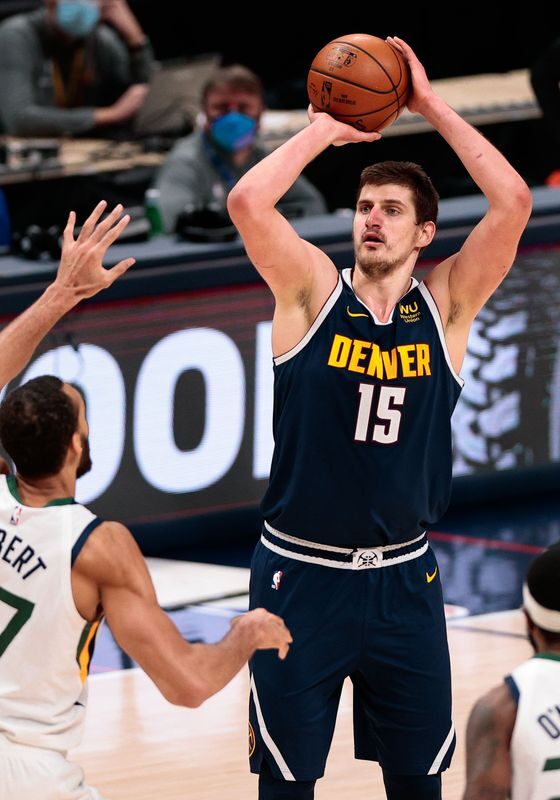
Nicola Jokic
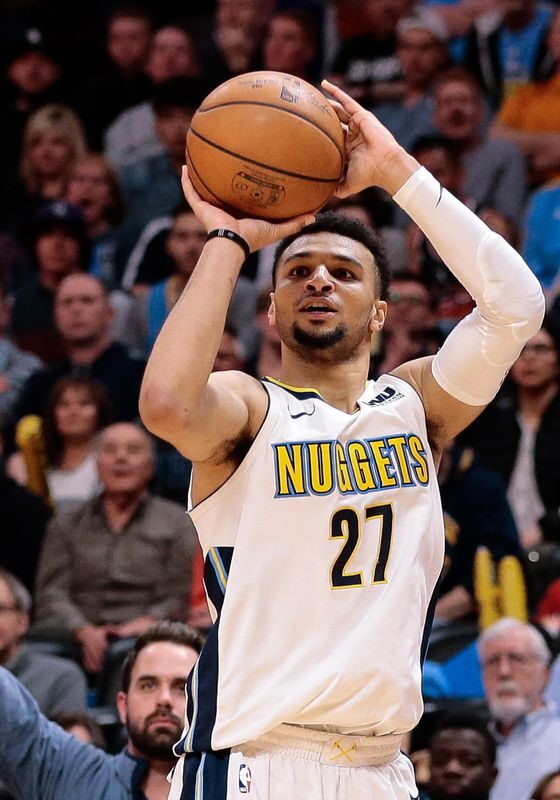
Jamal Murray